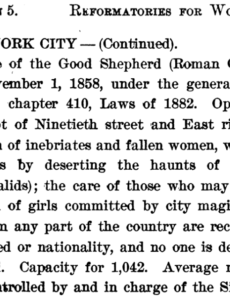Documenting New York City’s House of the Good Shepherd
This project recovers the history of New York City’s House of the Good Shepherd, the largest Magdalen asylum operating in Manhattan during the 19th century. Managed by the Congregation of Our Lady of Charity of the Good Shepherd, this hybrid institution consisted of a convent, industrial school, and reformatory for “fallen women” and “delinquent girls.” Beginning in 1867, the House of the Good Shepherd began receiving inmates by order of the courts as an alternative to prison through legislation targeting female vagrants between the ages of 14 and 21 who were accused of prostitution. The class of inmates committed by the courts was known internally as St. Joseph’s Class. This institution took on an Irish character in New York City since the majority of both its nuns and inmates were Irish and Irish American women. Employing the feminist research method of “reading against the grain,” this project extracts data from public records associated with St. Joseph’s Class to document the struggles of poor and working class Irish and Irish American women, and places a Catholic Magdalen reformatory within the history and development of the juvenile justice system in New York City.
Image Credits:
NYC House of the Good Shepherd Description. State Board of Charities, Directory of the Charitable, Eleemosynary, Correctional, and Reformatory Institutions of the State of New York. (Albany: James B. Lyon, State Printer, 1892), 445.
NYC House of the Good Shepherd Building. John Francis Richmond, New York and Its Institutions, 1609-1872. (New York: EB Treat 1872), 339.


